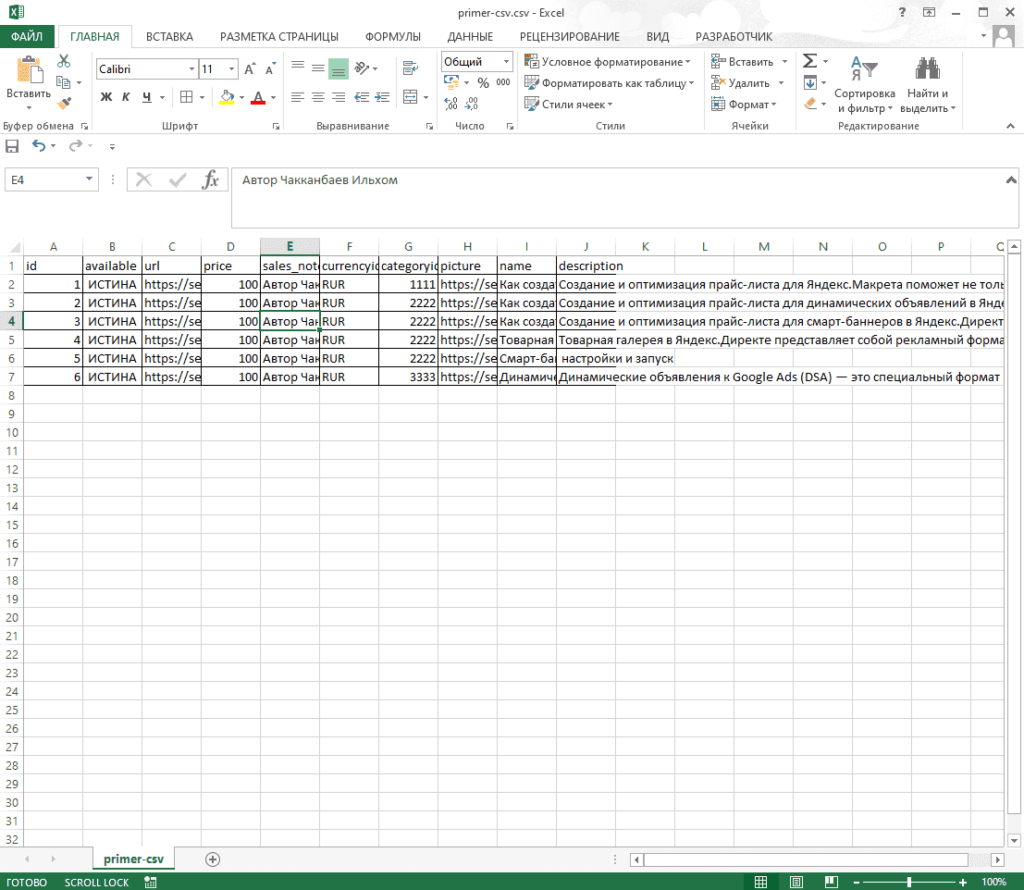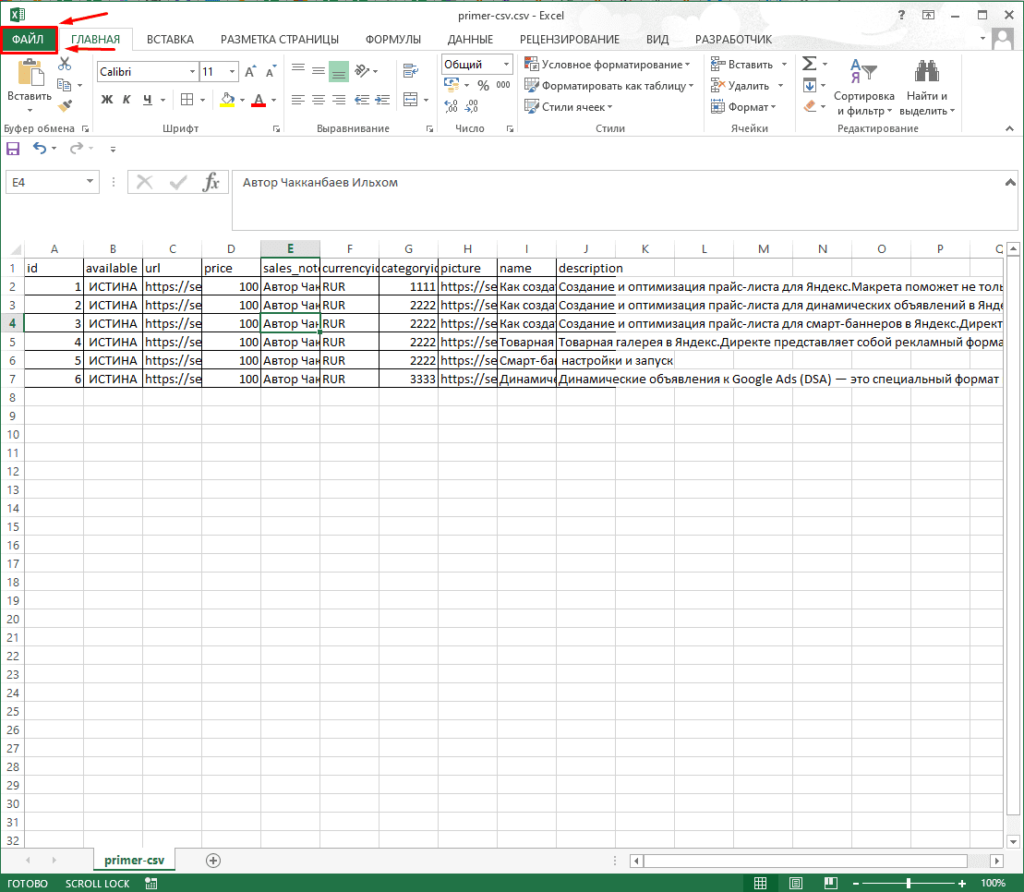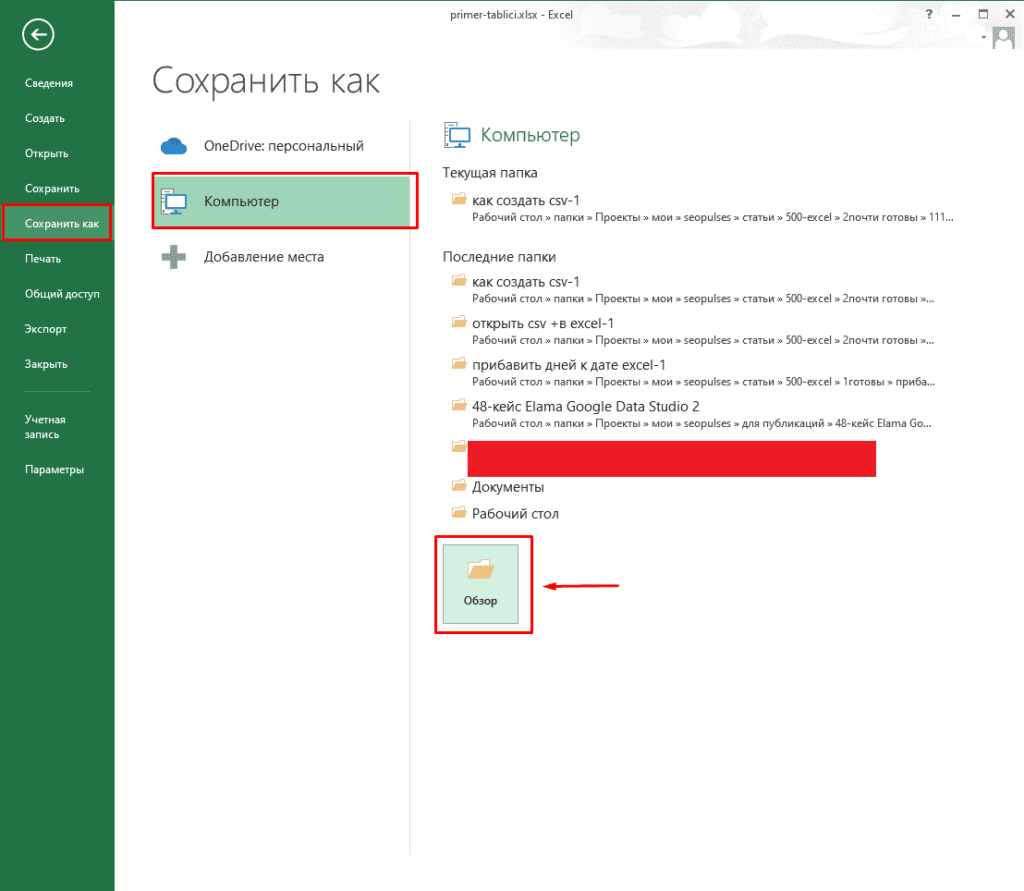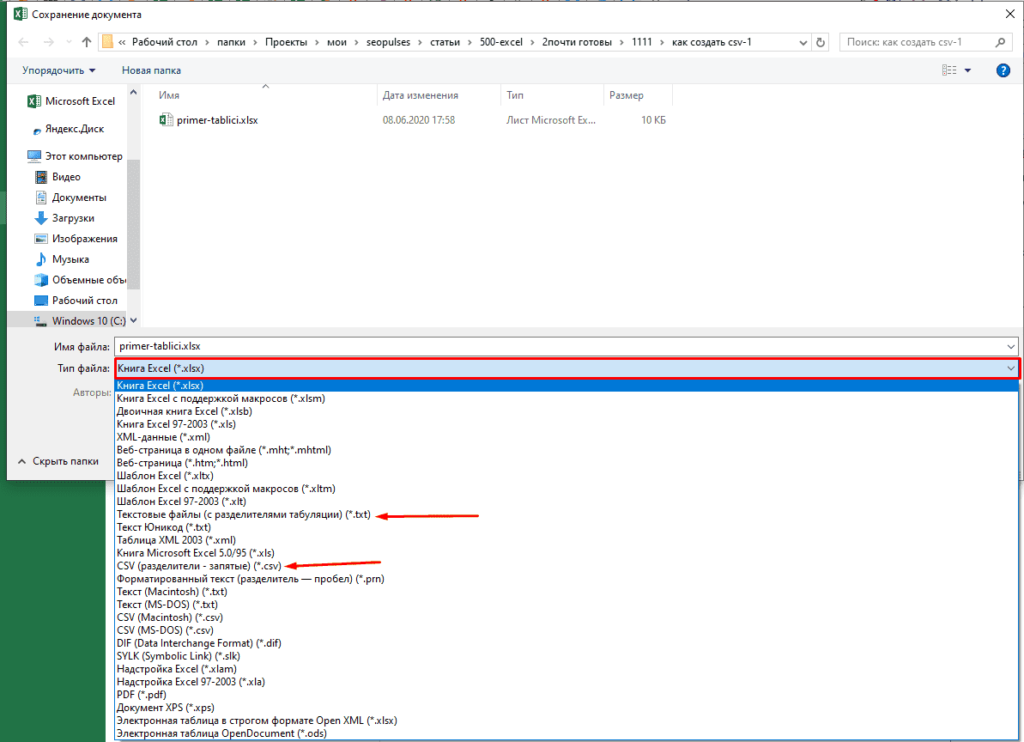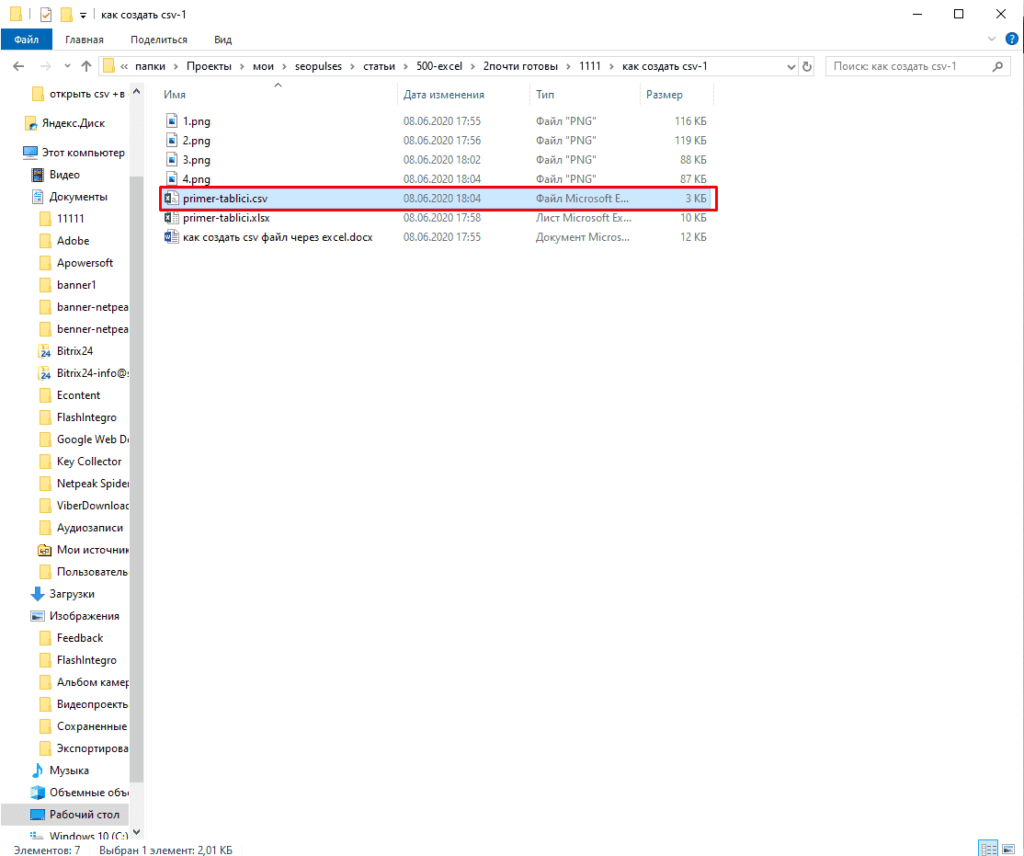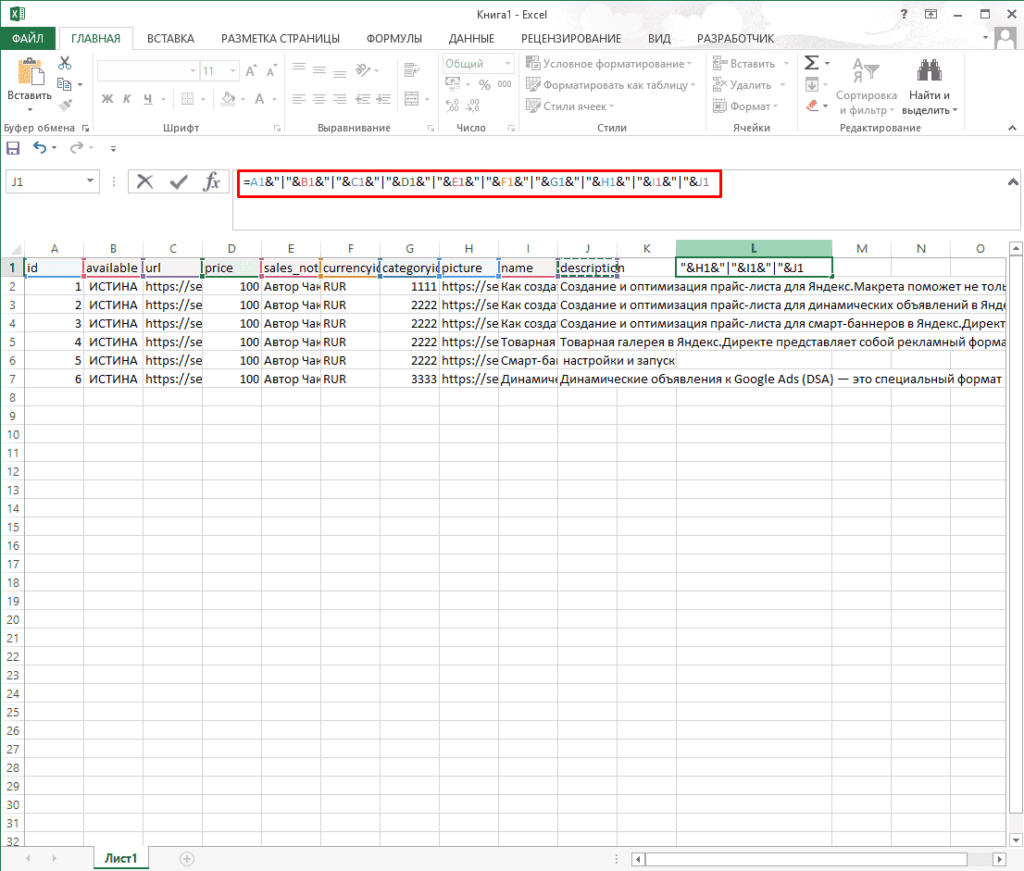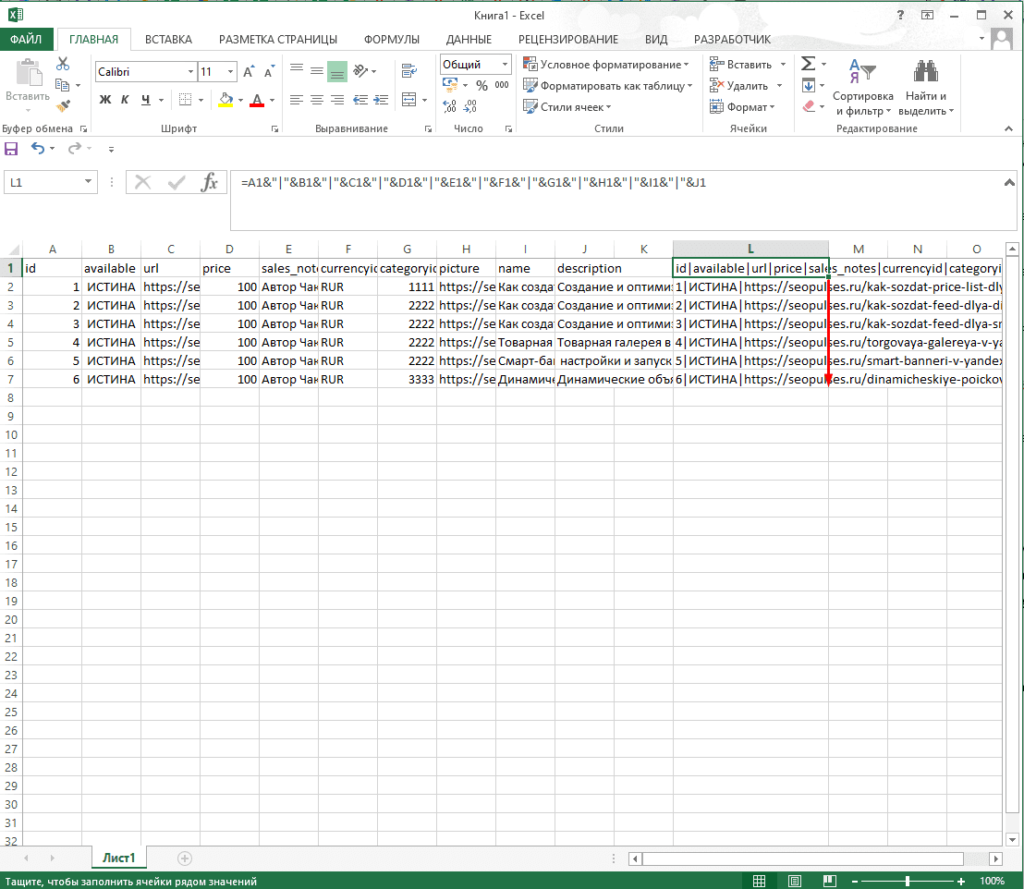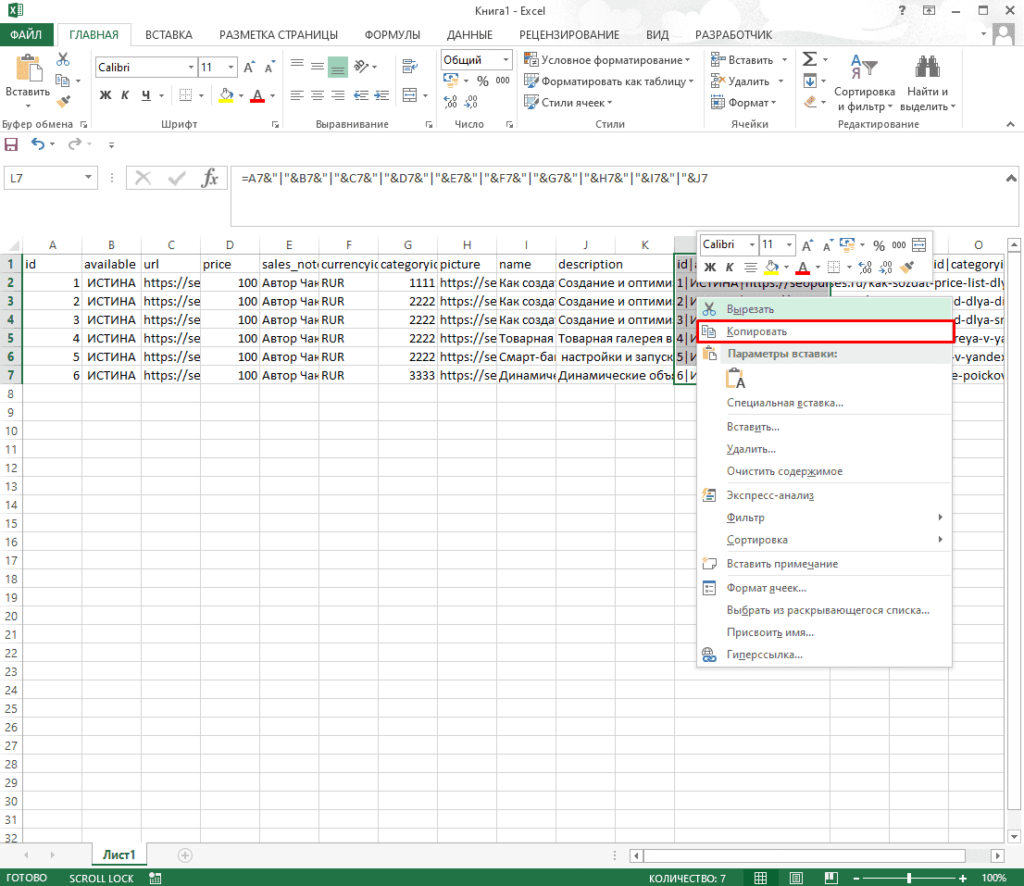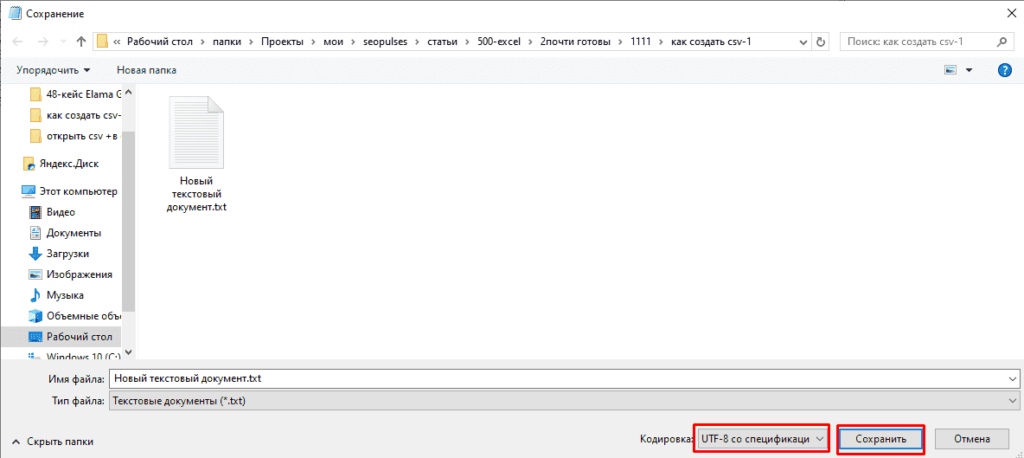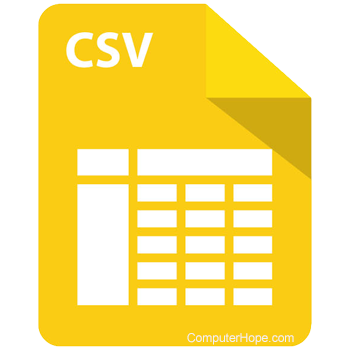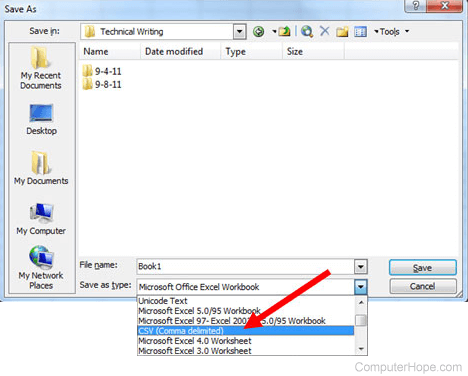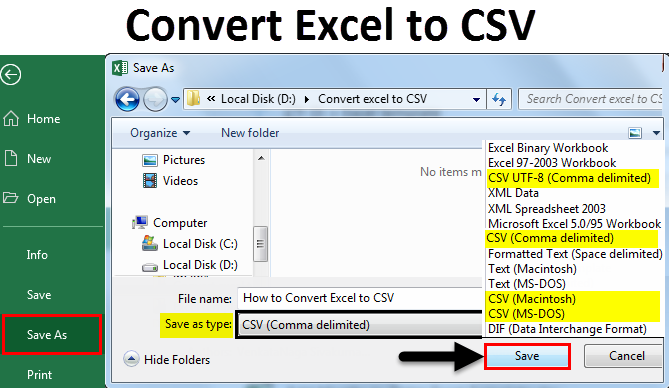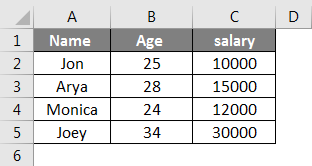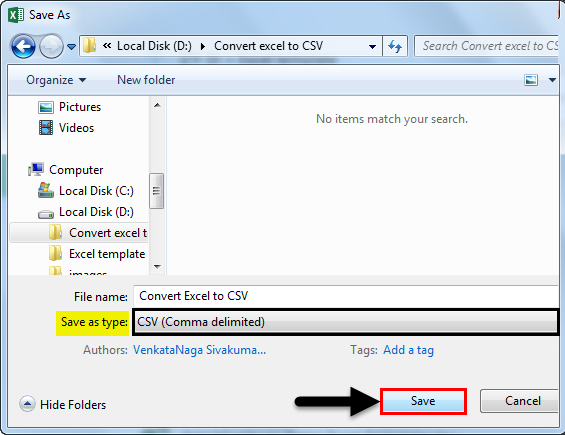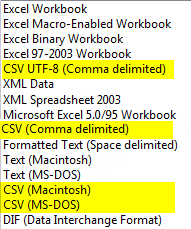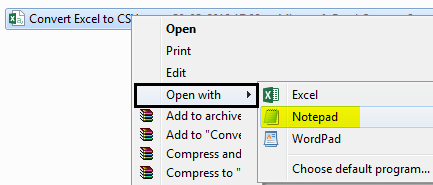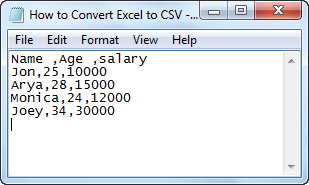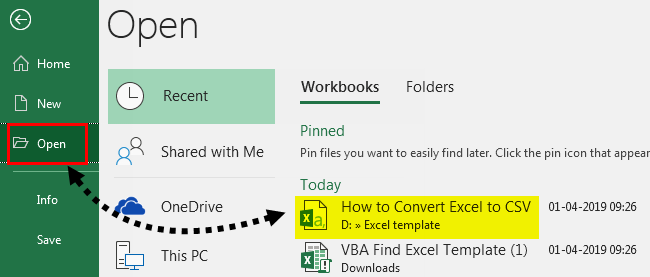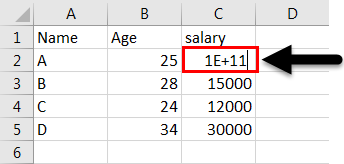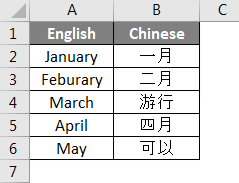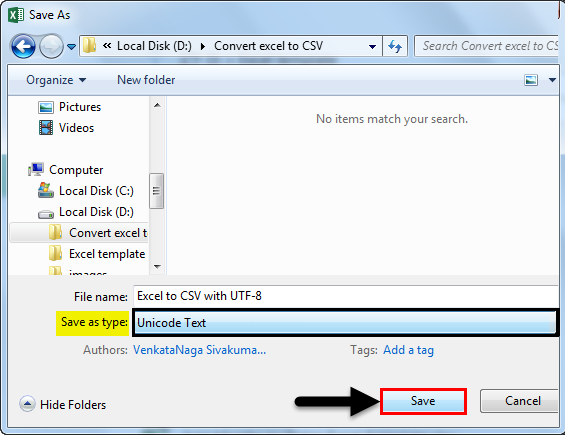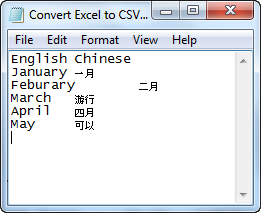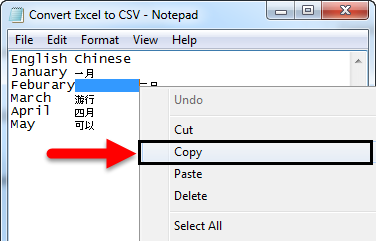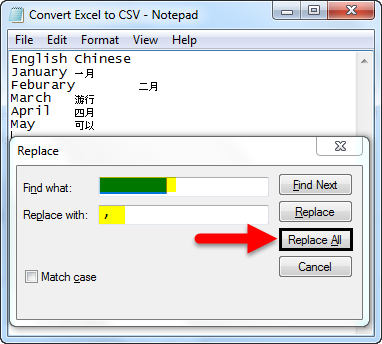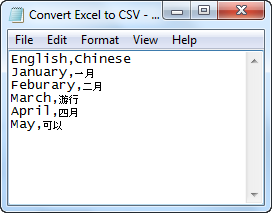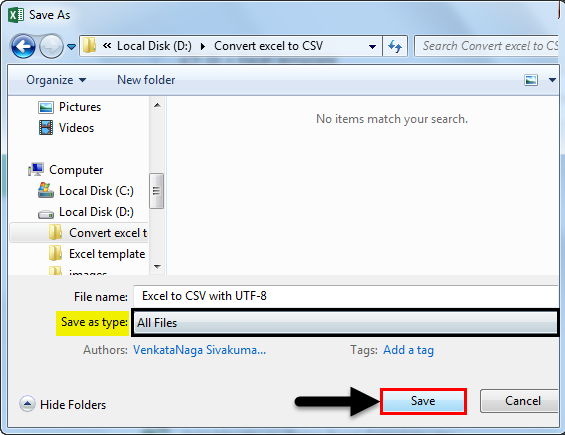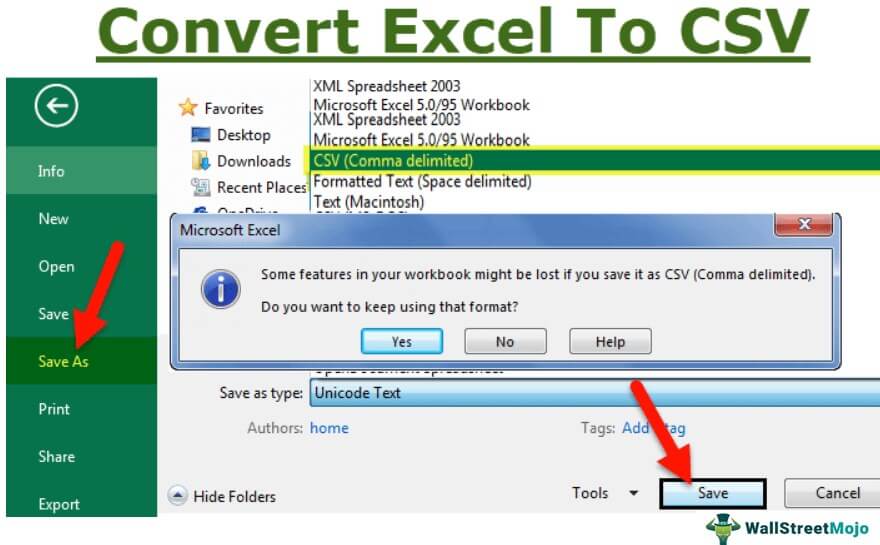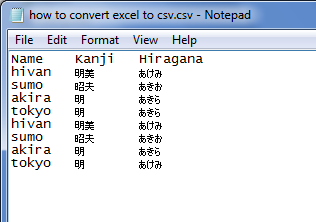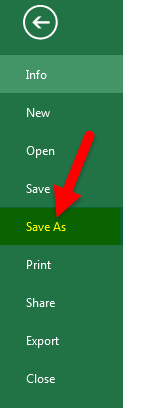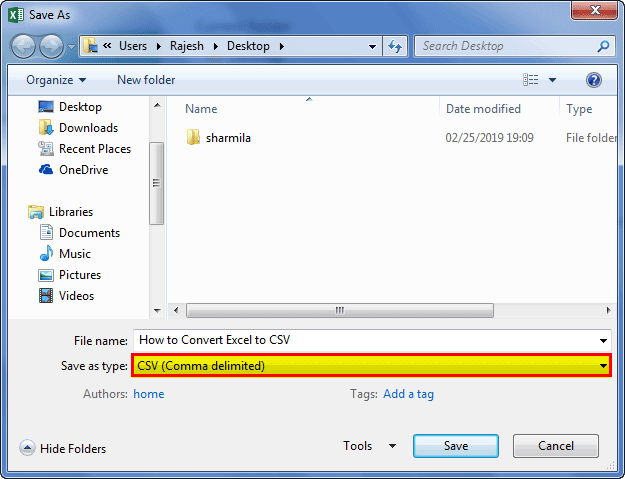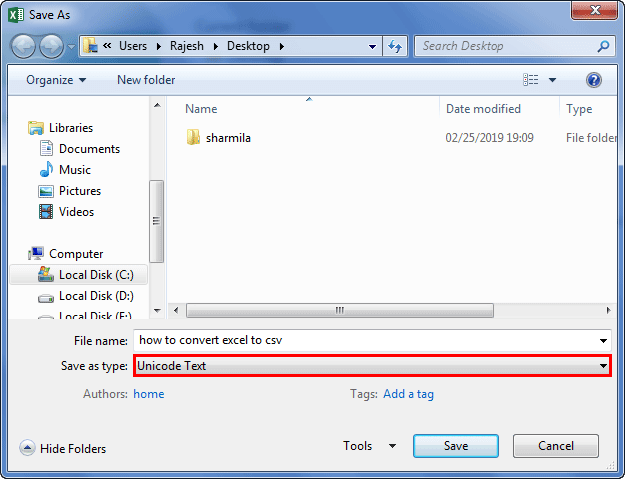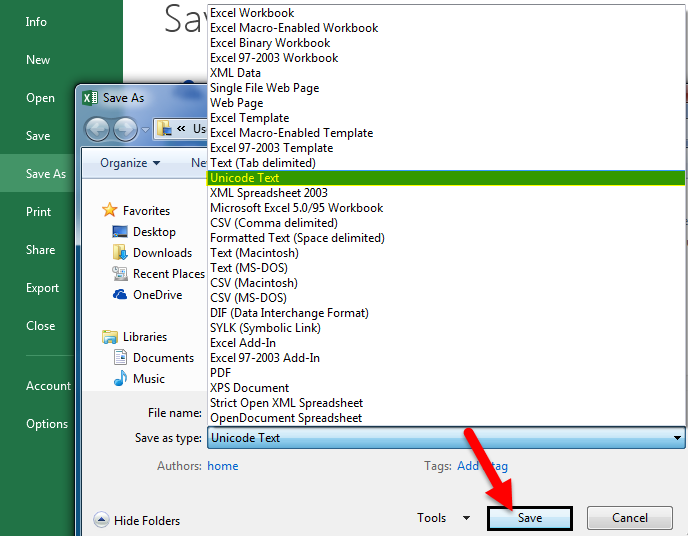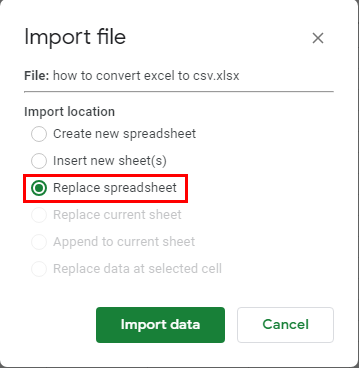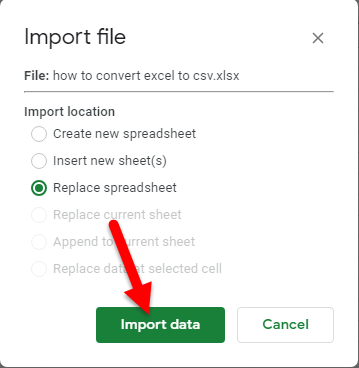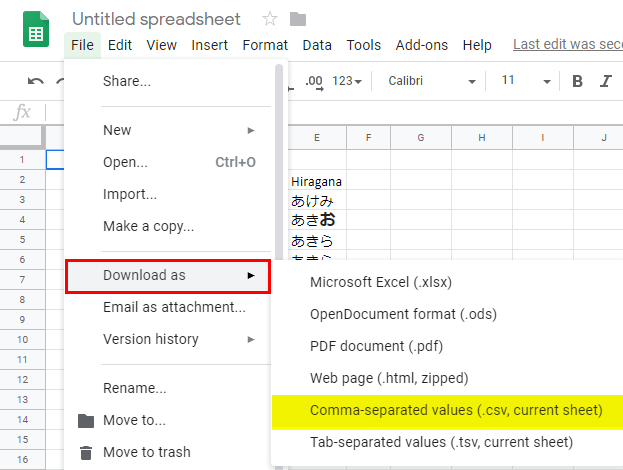Возможность создания CSV файла из таблицы Excel позволяет преобразовывать документы в нужный формат для загрузки в любые системы, например, outlook, Google Analytics, Яндекс.Метрику и многое другое.
- Способ №1;
- Способ №2;
- Для чего это нужно.
Видеоинструкция
Простой способ создания CSV через таблицу в Excel
В качестве примера будет использоваться таблица с данными, которую можно будет скачать ниже.
Для превращения файла в CSV потребуется нажать на кнопку «Файл» (левый-верхний угол).
Далее выбираем пункт «Сохранить как» и нажимаем на «Обзор».
Теперь выбираем нужный формат, например, стандартный CSV.
Все готово, мы получили нужный формат.
Проверив его в блокноте можно увидеть, что разделители стоят «;» (точка с запятой).

Ручной метод превращения таблицы Эксель в CSV-файл
Если требуется создать кастомный файл (с собственными разделителями, например, |). Для этого прописываем конструкцию между каждым элементом:
=A1&»|»&B1
Далее таким образом соединяем все элементы.
Растягиваем формулу до конца документа.
Выделяем нужный столбец (новый) и правым кликом мыши по нему выводим меню, где нажимаем на «Копировать».
Создаем текстовый документ новый (блокнот), кликнув правой клавишей мыши в нужной папке.
Открываем его и вводим новое поле.
После в левом-верхнем углу кликаем на «Файл»-«Сохранить как».
Выбираем нужный тип кодировки и сохраняем документ.
Важно! Можно сразу выбрать CSV как и в способе №1, дальнейшая инструкция предназначена как дополнительная возможность.
Важно! Лучше всего выбирать UTF-8, что позволит работать в дальнейшем с кириллицей.
Теперь опять кликаем правой клавишей мыши на файл и нажимаем на «Переименовать».
Стираем разрешение «.txt» и прописываем вместо него «.csv». При необходимости меняем название.
Все готово, мы получили нужный формат.

Для чего это нужно?
Создание CSV-файла потребуется для:
- Загрузка данных о расходах в Google Analytics;
- Создание фида динамического ремаркетинга;
- Получение прайс-листа для динамических объявлений в Яндексе и Смарт-баннеров.
Также можно ознакомиться с инструкцией по открытию CSV файла.
Updated: 02/01/2021 by
CSV is a simple file format used to store tabular data, such as a spreadsheet or database. Files in the CSV format can be imported to and exported from programs that store data in tables, such as Microsoft Excel or OpenOffice Calc.
CSV stands for «comma-separated values». Its data fields are often separated, or delimited, by a comma.
Example spreadsheet data
For example, let’s say you had a spreadsheet containing the following data.
| Name | Class | Dorm | Room | GPA |
|---|---|---|---|---|
| Sally Whittaker | 2018 | McCarren House | 312 | 3.75 |
| Belinda Jameson | 2017 | Cushing House | 148 | 3.52 |
| Jeff Smith | 2018 | Prescott House | 17-D | 3.20 |
| Sandy Allen | 2019 | Oliver House | 108 | 3.48 |
The above data could be represented in a CSV-formatted file as follows:
Sally Whittaker,2018,McCarren House,312,3.75 Belinda Jameson,2017,Cushing House,148,3.52 Jeff Smith,2018,Prescott House,17-D,3.20 Sandy Allen,2019,Oliver House,108,3.48
Here, the fields of data in each row are delimited with a comma and individual rows are separated by a newline.
Creating a CSV file
A CSV is a text file, so it can be created and edited using any text editor. More frequently, however, a CSV file is created by exporting (File > Export) a spreadsheet or database in the program that created it. Click a link below for the steps to create a CSV file in Notepad, Microsoft Excel, OpenOffice Calc, and Google Docs.
- Notepad (or any text editor)
- Microsoft Excel
- OpenOffice Calc
- Google Docs
Notepad (or any text editor)
To create a CSV file with a text editor, first choose your favorite text editor, such as Notepad or vim, and open a new file. Then enter the text data you want the file to contain, separating each value with a comma and each row with a new line.
Title1,Title2,Title3 one,two,three example1,example2,example3
Save this file with the extension .csv. You can then open the file using Microsoft Excel or another spreadsheet program. It would create a table of data similar to the following:
| Title1 | Title2 | Title3 |
| one | two | three |
| example1 | example2 | example3 |
In the CSV file you created, individual fields of data were separated by commas. But what if the data itself has commas in it?
If the fields of data in your CSV file contain commas, you can protect them by enclosing those data fields in double quotes («). The commas that are part of your data are kept separate from the commas which delimit the fields themselves.
For example, let’s say that one of our text fields is a user-created description that allows commas in the description. If our data looked like this:
| Lead | Title | Phone | Notes |
| Jim Grayson | Senior Manager | (555)761-2385 | Spoke Tuesday, he’s interested |
| Prescilla Winston | Development Director | (555)218-3981 | said to call again next week |
| Melissa Potter | Head of Accounts | (555)791-3471 | Not interested, gave referral |
To retain the commas in our «Notes» column, we can enclose those fields in quotation marks. For instance:
Lead,Title,Phone,Notes Jim Grayson,Senior Manager,(555)761-2385,"Spoke Tuesday, he's interested" Prescilla Winston,Development Director,(555)218-3981,said to call again next week Melissa Potter,Head of Accounts,(555)791-3471,"Not interested, gave referral"
As you can see, only the fields that contain commas are enclosed in quotes.
The same goes for newlines which may be part of your field data. Any fields containing a newline as part of its data need to be enclosed in double quotes.
If your fields contain double quotes as part of their data, the internal quotation marks need to be doubled so they can be interpreted correctly. For instance, given the following data:
| Player | Position | Nicknames | Years Active |
|---|---|---|---|
| Skippy Peterson | First Base | «Blue Dog», «The Magician» | 1908-1913 |
| Bud Grimsby | Center Field | «The Reaper», «Longneck» | 1910-1917 |
| Vic Crumb | Shortstop | «Fat Vic», «Icy Hot» | 1911-1912 |
We can represent it in a CSV file as follows:
Player Name,Position,Nicknames,Years Active Skippy Peterson,First Base,"""Blue Dog"", ""The Magician""",1908-1913 Bud Grimsby,Center Field,"""The Reaper"", ""Longneck""",1910-1917 Vic Crumb,Shortstop,"""Fat Vic"", ""Icy Hot""",1911-1912
Here, the entire data field is enclosed in quotes, and internal quotation marks are preceded (escaped by) an additional double quote.
Here are the rules of how data should be formatted in a CSV file, from the IETF’s document, RFC 4180. In these examples, «CRLF» represents a carriage return and a linefeed (which together constitute a newline).
- Each record (row of data) is to be on a separate line, delimited by a line break. For example:
aaa,bbb,ccc CRLF
- The last record in the file may or may not have an ending line break. For example:
aaa,bbb,ccc CRLF zzz,yyy,xxx
- There may be an optional header line appearing as the first line of the file with the same format as normal record lines. The header contains names corresponding to the fields in the file. Also, it should contain the same number of fields as the records in the rest of the file. For example:
field_name,field_name,field_name CRLF aaa,bbb,ccc CRLF zzz,yyy,xxx CRLF
- In the header and each record, there may be one or more fields, separated by commas. Each line should contain the same number of fields throughout the file. Spaces are considered part of a field and should not be ignored. The last field in the record must not be followed by a comma. For example:
aaa,bbb,ccc
- Each field may or may not be enclosed in double quotes. If fields are not enclosed with double quotes, then double quotes may not appear inside the fields. For example:
"aaa","bbb","ccc" CRLF zzz,yyy,xxx
- Fields containing line breaks (CRLF), double quotes, and commas should be enclosed in double quotes. For example:
"aaa","b CRLF bb","ccc" CRLF zzz,yyy,xxx
- If double quotes enclose fields, then a double quote appearing inside a field must be escaped by preceding it with another double quote. For example:
"aaa","b""bb","ccc"
Microsoft Excel
To create a CSV file using Microsoft Excel, launch Excel and then open the file you want to save in CSV format. For example, below is the data contained in our example Excel worksheet:
| Item | Cost | Sold | Profit |
|---|---|---|---|
| Keyboard | $10.00 | $16.00 | $6.00 |
| Monitor | $80.00 | $120.00 | $40.00 |
| Mouse | $5.00 | $7.00 | $2.00 |
| Total | $48.00 |
Once open, click File and choose Save As. Under Save as type, select CSV (Comma delimited) or CSV (Comma delimited) (*.csv), depending on your version of Microsoft Excel.
After you save the file, you are free to open it up in a text editor to view it or edit it manually. Its contents resemble the following:
Item,Cost,Sold,Profit Keyboard,$10.00,$16.00,$6.00 Monitor,$80.00,$120.00,$40.00 Mouse,$5.00,$7.00,$2.00 ,,Total,$48.00
Note
The last row begins with two commas because the first two fields of that row were empty in our spreadsheet. Don’t delete them — the two commas are required so that the fields correspond from row to row. They cannot be omitted.
OpenOffice Calc
To create a CSV file using OpenOffice Calc, launch Calc and open the file you want to save as a CSV file. For example, below is the data contained in our example Calc worksheet.
| Item | Cost | Sold | Profit |
|---|---|---|---|
| Keyboard | $10.00 | $16.00 | $6.00 |
| Monitor | $80.00 | $120.00 | $40.00 |
| Mouse | $5.00 | $7.00 | $2.00 |
| Total | $48.00 |
Once open, click File, choose the Save As option, and for the Save as type option, select Text CSV (.csv) (*.csv).
If you were to open the CSV file in a text editor, such as Notepad, it would resemble the example below.
Item,Cost,Sold,Profit Keyboard,$10.00,$16.00,$6.00 Monitor,$80.00,$120.00,$40.00 Mouse,$5.00,$7.00,$2.00 ,,Total,$48.00
As in our Excel example, the two commas at the beginning of the last line make sure the fields correspond from row to row. Do not remove them!
Google Docs
Open Google Docs and open the spreadsheet file you want to save as a CSV file. Click File, Download as, and then select CSV (current sheet).
Download Article
An easy-to-follow tutorial on making CSV files
Download Article
- Using a Spreadsheet Application
- Using a Text Editor
- Video
- Q&A
|
|
|
Do you need to create a CSV file for your data? A CSV file, which is a “comma-separated values” file, allows you to save your data in a table-structured format, which is useful when importing data into databases and web applications. This wikiHow article teaches you how to create CSV files using Microsoft Excel, OpenOffice Calc, Google Sheets, and in a text editor.
Things You Should Know
- Using a spreadsheet application like Excel, Google Sheets, or OpenOffice Calc is the easiest way to make CSV files.
- If you can’t use any of those programs, you can use a text editor like Notepad or TextEdit.
- In a spreadsheet program, go to File > Save As > File Type > CSV. In a text editor, go to «File > Save As > File Type > All Files» and name the file with .csv at the end.
-
1
Open a new spreadsheet in Microsoft Excel, OpenOffice Calc, or Google Sheets. You can use any spreadsheet software to easily convert table data to CSV files.
- If you want to convert an existing spreadsheet to CSV format, skip to step #4.
-
2
Type each of your headers, or field names into the cells located in row 1 at the top of the spreadsheet. For example, if entering data for items you’re selling, type “Item Name” into cell A1, “Item Price” into cell B1, “Item Description” into cell C1, and so on.[1]
Advertisement
-
3
Enter your data into the spreadsheet under each column as needed. Using the example outlined in step #2, write the item name in cell A2, the item’s price in cell B2, and the item’s description in cell C2.
-
4
Click File and select Save As. If using Google Sheets, this option will read as “File > Download as.”[2]
-
5
Select CSV under the “Save as type” dropdown menu.
-
6
Type a name for your CSV file, then click Save. You have now created a CSV file, and commas will automatically be added to the file to separate each field.[3]
Advertisement
-
1
Open Notepad on your PC or TextEdit on your Mac. Because CSV files are actually just plain text files in a specific comma-separated format, you can use your computer’s built-in text editor to create one.
-
2
Type your field names separated by commas onto the first line. For example, if entering data for items you’re selling, type the following onto the first line: “name,price,description.” There must be no spaces between items.
-
3
Type your data onto the second line, using the same format as your field names on the first line. Using the example outlined in step #1, write the actual item name, followed by the item’s price and description. For example, if selling baseballs, write “baseball,5.99,sports.”
-
4
Continue typing your data for each individual item onto each subsequent line. If leaving any fields empty, make sure you include the comma, or the remaining fields will be off by one.
-
5
Click File and select Save. Alternatively, press Ctrl + S on your keyboard if you’re using a PC, or Cmd + S on a Mac.
-
6
Save your file. To do this, click the drop-down menu next to Save as type and select All Files. Next, type a name for your file and end it with .csv.
- Click Save. You have now created a CSV file that you can easily import into a spreadsheet program, database, or web application.
Advertisement
Add New Question
-
Question
How do I execute a CSV file?
CSV files are not executables, so you can’t “run” it like an app. These files are usually read by programs that use it as data.
Ask a Question
200 characters left
Include your email address to get a message when this question is answered.
Submit
Advertisement
Video
Thanks for submitting a tip for review!
About This Article
Thanks to all authors for creating a page that has been read 246,345 times.
Is this article up to date?
Convert Excel to CSV (Table of Contents)
- Convert Excel to CSV File
- How to Convert Excel to CSV?
Convert Excel to CSV File
We save files in different formats like Word, PowerPoint, Excel, Text, and Macro enabled book, etc. CSV is one of the formats available for saving files in Excel. However, before learning how to convert an Excel file to CSV, first, we will understand the full form of CSV and its importance.
The full form of CSV is Comma-Separated Value. Why it is called a Comma separated value is because a Comma separates each column in CSV. It stores the data in table format as plain text as it stores data as plain text, various software programs, and applications for import and export. Therefore, it will organize better when working with huge data.
How to Convert Excel to CSV?
Let’s understand how to convert Excel to CSV and different kinds of Excel CSV formats by using some examples.
You can download this Convert Excel to CSV Template here – Convert Excel to CSV Template
Example #1 – Conversion of Excel to CSV
Consider a file which has data with Names, Age and Salary as shown in the below screenshot.
Once data is inserted, try to save the file with Save As option. Select the path where you want to save the file and select the Save as type as CSV (Comma delimited), which is highlighted.
Give the file name as per your requirement and save it. Here I have given Name as Convert Excel to CSV.
Now we will see how it is saved. Observe the file that is saved in CSV (Microsoft Excel Comma Separated Value File) is our CSV file. We can observe the icon is also different from the Excel file.
Now we saved the file in CSV, but if we observe there is “(Comma delimited),” similarly, we have some other formats of CSV files. We will see each of the Excel CSV file and what is the meaning and purpose of different formats.
There are 4 different formats of CSV file. They are Comma delimited, Macintosh, MS-DOS and UTF – 8.
We can observe different CSV formats in Excel. Now we will see an explanation for each of them.
- CSV (Comma delimited) – This format converts the data to plain text separated by commas, and another Windows Operating System can use this format files.
- CSV (Macintosh) – This format files also save the same as comma-separated but can use this in the Mac operation system.
- CSV (MS-DOS) – This format file can be used in the MS-DOS operating system.
- CSV UTF-8(Comma Delimited) – UTF-8 uses 1 to 4 bytes for each symbol.
When we save a CSV format file, it will only save the currently active tab of excel. If we want all the sheets in Excel into CSV format, we need to do it individually. Regarding this, we may get the message while saving the file in the form of a warning pop-up.
In addition to this, we may get another pop-up message stating that our saved file has features that may not be compatible with CSV format. Do you want to save it? Just click, Yes to proceed further.
I hope you understand how to convert Excel to CSV and the different CSV formats available.
If we want to see the CSV in text format, in case if it opens in Excel, select the file and right click then choose the option Open with.
Choose Notepad and see how the data stores in the CSV separated by commas. Observe Comma separates every column.
Open a CSV file in Excel.
We can access our CSV files from our Excel spreadsheets directly. We will see how we can do that.
Open an excel file and click on the File menu, then the below screen will appear. From that, Choose the Open option from the list of options. It will take to share drive path go to the path where our file is saved and select .CSV file.
Then the file opens, as shown in the below screenshot.
If we observe A’s salary as 1E+11 because as we directly opened CSV in excel, it converts to exponential format in case if any number starts with Zeros, it will convert to a mathematical format so that it will remove the Zeros. It will display only the other part of the number.
Example #2 – Conversion of Excel to CSV with UTF-8
First, we will understand why we need to use UTF-8. When an excel spreadsheet has foreign characters and if we follow the same process of “save as” in the CSV format, it may not work because that way is suitable for ASCII characters if the text is apart from the ASCII characters that are in a foreign language it may distract the data.
UTF-8 uses 1 to 4 bytes for each symbol. It is most useful when your file has ASCII characters as it stores in one byte each. To convert the file with foreign language characters, follow the below procedure. Suppose we have a file that has text in the Chinese language, as shown in the below screenshot.
To convert to CSV, first save the file in the Unicode Text format as shown in the below screenshot.
Please open the file; it will look like the below text file.
If we observe the above screenshot, each column is separated by tab space. In the CSV file, each column is separated by the “,” character.
So, we need to replace the space with the “,”. Copy the space between two columns.
Press Control+H to find and replace the text. In “find what”, give the control v to paste the copied space. In Replace with option input “,” and click on the option Replace All.
Once we click on Replace All, space will be replaced by “,”.
Now save the file with “.CSV” format and change the encoding option to UTF-8. Change the save as type as All Files.
Things to Remember About Convert Excel to CSV
- The full form of CSV is Comma-Separated Value.
- To convert an Excel to CSV, use the Option save while saving the file and selecting the CSV format.
- There are 4 different CSV formats, they are CSV (Comma delimited), CSV (Macintosh), CSV(MS-DOS) and CSV UTF-8.
- We can convert all sheets of excel workbook at a time.
Recommended Articles
This is a guide to Convert Excel to CSV. Here we discuss how to Convert Excel Files to CSV along with practical examples and a downloadable excel template. You can also go through our other suggested articles –
- Excel REPLACE Function
- CSV Files into Excel
- Excel Export to PDF
- Convert Numbers to Text in Excel
Comma Separated Values, or CSV, is a useful feature used vividly to keep the tabulated data in simple text format. They have significance in the application and programming world for the best data utilization by importing or exporting data from Excel files.
The CSV format helps the users quickly review the data and make corrections if required. The changes, such as quoting values and delimiter, are easily done. It is possible because data is presented in a simple format to easily understand by a new user without having much experience with it. The below-presented information helps examples understand the converting process of excel data to CSV without causing any damage to the symbols and special characters.
Table of contents
- Convert Excel To CSV File
- Explanation Of Converting Excel To CSV File
- How To Convert Excel To CSV?
- Examples
- How To Use CSV Files?
- Things To Remember While Converting Excel To CSV
- Frequently Asked Questions (FAQs)
- Recommended Articles
- Convert Excel to CSV format helps the users quickly review the data and make corrections if required. The changes, such as quoting values and delimiter, are easily done. It is possible because data is presented in a simple format to easily understand by a new user without having much experience with it.
- We can Convert Excel files into CSV using the delimiter, UTF-8, UTF-16, and google sheets.
- The data scientist uses CSV files for the visualization of tabular data. These are easily retrieved into various applications in creating databases in excel and spreadsheets.
Explanation Of Converting Excel To CSV File
A user needs to use any technology available to convert the Excel sheet into CSV format. Fair dealing of warnings and security messages is required while opening or converting into CSV files and changing the formats. It is easy to convert the data presented in any language easily using UTF-8.
First, it needs to convert the data into text format by changing the file format to .txt. Then, the data is displayed, as shown below.
We should convert the data into the delimited comma format by replacing the tab space with a comma. After that, we should save the file format to.CSV from text format.
How To Convert Excel To CSV?
Let us consider an example to Convert Excel to CSV File.
This example illustrates the conversion of a simple Excel sheet into CSV format.
- In the first step, move to the Microsoft Office button (2007 version) or File tab (2013 version) and select the ‘save as’ option or press shortcut of F12 to display the save as dialogue box.
- Then, we must type the file’s name in the File name box and select the Save as type as CSV comma-delimited. The dialog box is shown in the below screenshot.
- We must select the destination folder to store the file for future use and click on the Save button.
- After that, it will display two dialog boxes. One indicates that it will save the active Excel sheet in CSV format, and the second suggests the message of several features not supported by the CSV format.
Examples
We will see some other ways to Converting of Excel files into CSV with specific examples, namely:
- Converting of Excel files into CSV Using UTF-8.
- Converting of Excel files into CSV Using UTF-16.
- Use of Google Spreadsheets to Convert the Data.
Example #1 – Converting of Excel files into CSV Using UTF-8
This example illustrates the Excel CSV UTF-8In case excel contains any smart quotes or any other language data while converting the data from Excel to CSV, it won’t convert accurately and ends up getting question marks. So while importing the data, also we get the same things. However, by using Excel CSV UTF8 as the encoding, we can choose the file format and language easily.read more with CSV. When an Excel sheet contains special characters and data in other languages, these are not displayed properly. The Excel file is converted using UTF-8, shown in the figure, for proper display.
- First, the excel sheet should be converted into the Unicode text format using the same type as a .txt. It results in a tab space between the data in a line.
- The tab space is replaced through comma convert data into a comma-delimited file.
- In this step, file format .txt is converted into CSV through the “Save As” option or by changing the Excel file name with extension .CSV.
Example #2 – Exporting Excel Files into CSV Using UTF-16
Converting Excel to CSV through UTF-16 is easy. It is done in two steps.
- We must select the “Save As” option through the Microsoft Office button, choose the “Unicode Text” format .txt under the “Save as type” box, and click on “OK”.
- Then, right-click on the file in windows explorer and change the file format to CSV.
Example #3 – Use of Google Spreadsheets to Convert the Data
Google spreadsheets help convert data to CSV format over the internet by following five steps.
- Step 1: First, go to Google Drive, and click on “Blank spreadsheet” in “Google Sheets”.
- Step 2: Then, we must Import an existing file or create a new sheet in excelWhen we open a new workbook, there are three worksheets available by default. However, if you want to insert a new worksheet into the workbook, the shortcut key is Shift + F11.read more with data.
- Step 3: Next, we must upload the file to “Google spreadsheet” from the computer, and choose the “Replace spreadsheet” option.
- Step 4: Next, click on import data.
- Step 5: Finally, move to the “File” tab, then choose “Download as”, and then “Comma-separated values” to convert into CSV, as illustrated in the figure.
How To Use CSV Files?
The data scientist uses CSV files for the visualization of tabular data. These are easily retrieved into various applications in creating databases in excelWhen we enter data into Excel in the form of tables with rows and columns and give each table a name, we create a database.read more and spreadsheets. There are two ways in which the web developer includes using the CSV files.
- Easy to import to databases irrespective of the software using for developing a website.
- Better management of the high volume of data is possible since data in plain text format without any formulae.
Using the CSV files effectively needs to import them into applications like databases and convert them into tables to analyze the data further. It increases the ease of making decisions accurately.
For example, when we import customer data into an Excel sheet, the address of customers is in different columns, and the time takes to copy the data from other cells. CSV helps in handling this situation better by separating data through commas.
Things To Remember While Converting Excel To CSV
We should remember the following things to Convert Excel to CSV Files successfully.
- It needs to correctly select the different CSV formats available in the Excel sheet, such as CSV Macintosh, CSV MS-DOS, and Unicode text. We should choose the appropriate format based on user requirements.
- At a time, only one sheet of Excel workbook that is active is converted into CSV format.
- When data is imported into the word processing application, tab space should be replaced with a comma to convert it successfully to the comma-separated values.
- A user can use free tools available on the internet to convert the Excel sheet into CSV format without much effort.
- It is impossible to convert all sheets of Excel workbooks at a time.
Frequently Asked Questions (FAQs)
1. What is CSV format used for?
CSV format helps the users quickly review the data and make corrections if required. They have significance in the application and programming world for the best data utilization by importing or exporting data from Excel files.
2. Name the ways to convert Excel to CSV.
We can convert Excel to CSV in the following ways, namely.
• We can Convert Excel to CSV using the delimiter option.
• By Converting the Excel files into CSV Using UTF-8.
• Converting of Excel files into CSV Using UTF-16.
• Use of Google Spreadsheets to Convert the Data.
3. What are the ways in which the web developer includes using the CSV files?
There are two ways in which the web developer includes using the CSV files.
• Easy to import to databases irrespective of the software using for developing a website
• Better management of the high volume of data is possible since data in plain text format without any formulae.
Recommended Articles
This article is a guide to Convert Excel to CSV Files. Here, we convert to CSV, delimiter, UTF-8, UTF-16, Google sheets, example & downloadable Excel template. You may learn more about Excel from the following articles: –
- Excel UNICODE
- How to Import Data in Excel?Data can be imported into Excel from a variety of sources, including the Web, Access, Text, and any other server.read more
- CSV vs Excel
- AutoSave in ExcelAutosave in excel is a function/facility to save the changes or progress of work automatically. This helps us reduce the impact of risk of data loss in any crash situation in the system. We can manually set the time to save the progress automatically.read more
- Divide Cell in ExcelDivide in Excel is used for division applications, where (/) is the symbol and we can write an expression =a/b, where a and b represent two numbers or values to be divided.read more

